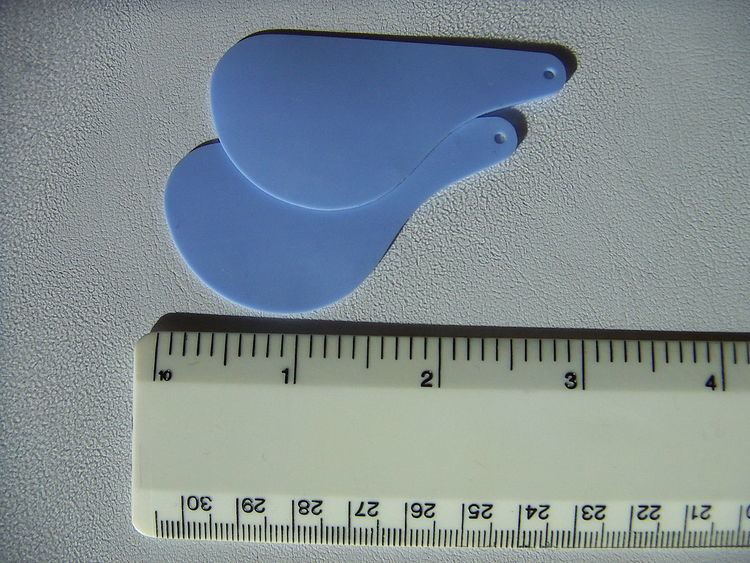ICD-9-CM 21.5, 21.88 | MedlinePlus 003012 | |
 | ||
Septoplasty [sep′tō·plas′tē] (Etymology: L, saeptum, septum; Gk, πλάσσειν plassein – to shape), or alternatively submucous septal resection and septal reconstruction, is a corrective surgical procedure done to straighten the nasal septum, the partition between the two nasal cavities. Ideally, the septum should run down the center of the nose. When it deviates into one of the cavities, it narrows that cavity and impedes airflow. Deviated nasal septum or “crooked” internal nose can occur at childbirth or as the result of an injury or other trauma. If the wall that functions as a separator of both sides of the nose is tilted towards one side at a degree greater than 50%, it might cause difficulty breathing. Often the inferior turbinate on the opposite side enlarges, which is termed compensatory hypertrophy. Deviations of the septum can lead to nasal obstruction. Most surgeries are completed in 60 minutes or less, while the recovery time could be up to several weeks. Septoplasty is sometimes done with rhinoplasty for cosmetic correction of the deformities of the external nasal framework.
Contents
Procedure
The procedure usually involves a judicious excision/realignment of a portion of the bone and/or cartilage in the nasal cavity. Under general or local anesthesia, the surgeon works through the nostrils, making an incision in the lining of the septum to reach the cartilage/bone targeted in the operation. Sufficient cartilage and bone is preserved for structural support. After the septum is straightened, it may then be stabilized temporarily with small plastic tubes, splints, or sutures internally.
Indications
Apart from in patients with deviated nasal septum causing airway obstruction leading to difficult breathing, recurrent rhinitis, or sinusitis, septoplasty is done as an approach to hypophysectomy. It is sometimes done as well to cure recurrent nosebleed (epistaxis) due to septal spur.
Contraindications
Septoplasty should not be done in acute nasal or sinus infection. It should also be avoided if the person has untreated diabetes, severe hypertension or bleeding diathesis.
Post-operation
Unless there are unusual complications, there is no swelling or discoloration to the external nose or face with septoplasty alone. Packing is rare with modern surgical techniques, but splinting the inside of the nose for a few days is common; the splints are not visible externally. One percent of patients can experience excessive bleeding afterwards — the risk period lasts up to two weeks. This could require packing or cautery, but is generally handled safely and without compromise of the ultimate surgical result. Septal perforation and septal hematoma are possible, as is a decrease in the sense of smell. Temporary numbness of the front upper teeth after surgery is common. Sometimes the numbness extends to the upper jaw and the tip of the nose. This almost always resolves within several months.
The nasal tissues should mostly stabilize within 3-6 months post-surgery, although shifting is still possible for up to and over a year afterwards.
